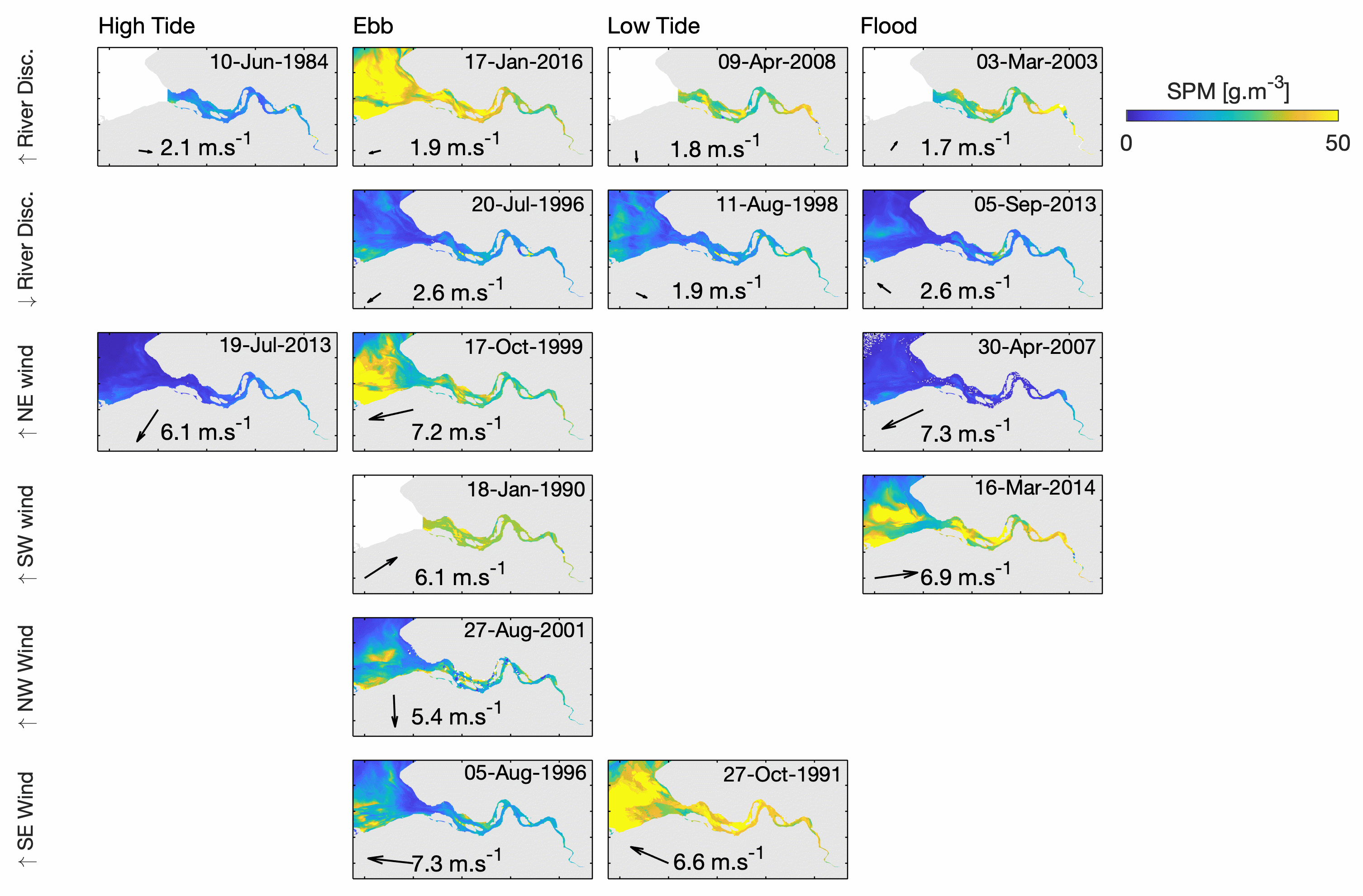Juliana Tavora1*, Marloes Penning de Vries1, M. Suhyb Salama1, Chris M. Mannaerts1, Daphne van der Wal 1,2
1 Faculty of Geo-Information Science and Earth Observation (ITC), University of Twente
2 NIOZ Royal Netherlands Institute for Sea Research, Dept of Estuarine and Delta Systems
*Corresponding author:
Introduction
Estimating suspended particulate matter (SPM) is a key factor to interpret sedimentary exchanges between land and sea. SPM is most likely be impacted by changes in weather and climate, for example in reaction to variations in river discharge and wind characteristics. Yet, the linkages between wind and river discharge and the role these have on local dynamics and spatial-temporal patterns of estuarine SPM are, to date, largely unknown.
Methods
This study uses 37 years (1984-2020) of atmospherically corrected remote sensing reflectance data from Landsat 5, 7, and 8 to investigate SPM with winds and river discharge in a turbid estuary (see Figure 1). From these data we establish a long time series of satellite-derived SPM for the Scheldt Estuary, The Netherlands. SPM was estimated using a generic algorithm applied to the near-infrared band Additionally, a time series of river discharge and wind speed were used to assess the potential effects of these two coastal drivers on the spatial and temporal variability of SPM. In principle, such approach can provide quantitative and qualitative evaluation of SPM dynamics at high spatial resolution.
Results
The observed spatial and temporal patterns between SPM and river discharge and SPM and wind speed which correlate best at daily and monthly timescales, reveal the complex importance of these two drivers for the Scheldt Estuary system. Our study also demonstrates the usefulness of applying the high-resolution Landsat data to capture where river discharge and wind speed mostly affect SPM within the Scheldt Estuary although quantitative evaluations of SPM dynamics can be significantly limited by cloud coverage and/or low temporal resolution (16-day overpass). Finally, studies of synoptic variability and the hydrodynamics would assist in better understanding of SPM behaviour driven by river discharge and wind speed at strategic locations, which are further determined by spatial correlations.

Figure 1: Examples of spatial SPM variability under multiple river discharge and wind configuration
I. Surname1*, F.N. Another-Surname2 , Y. Next-Surname2
1 University Name, Country; 2 Organization Name, Country
* Corresponding author: mail.name@organization.org


